IGC Show recap
Last week, the Jens (Polanz and Zurko) and I hit the big city to attend the IGC Show, now at its new home at Chicago’s McCormick Place, a decision forced by the closing of the exhibit space at Navy Pier. A move like that is a major earthquake for any show, and we wanted to see how they coped.
Pretty well, we’d say, considering. Here are the pluses and minuses that we could spot:
Plus: It’s still Chicago in August, when the temperature can be 75F or 100F. Cleaer skies and moderate temperatures made it possible to enjoy the city while attending the show.
Minus: Unlike Navy Pier, McCormick Place is not walking distance from anything except a few hotels and restaurants.
Plus: The trade show hall has twice the space of Navy Pier’s, and lots of windows, for a bright, spacious show that made for easy navigation and good picture-taking.
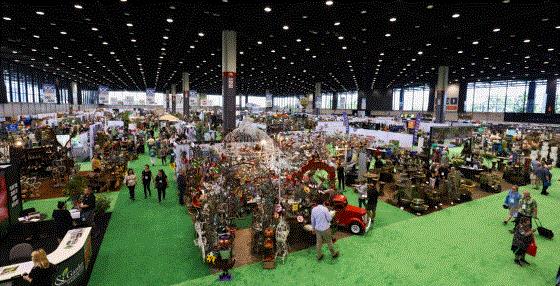
Minus: All that extra space made some question if the numbers of exhibitors or attendees had shrunk. (We asked show owner Jeff Morey about that, but he said his policy has always been to never talk numbers—it’s about the quality of the exhibitors and audience, not the quantity.) We can’t guess at either number, but we found plenty of booths worth visiting, and chatted with plenty of quality garden center folks in the aisles.
Minus: Once you get dropped at McCormick, you still have a long, long walk to the Lakeside Center that houses the IGC Show. They could have used a few more signs to let you know you were headed the right way. (But simply ask your cab/rideshare driver to drop you at Lakeside, and they will, saving you the walk.)
Plus: The educational sessions were right on the tradeshow floor, and the keynote and concert stage were just outside the hall, making it super easy to access all the events.
Minus: Fewer lunch options at McCormick compared to Navy Pier.
Plus: A five-minute walk away is a place called Fatpour Tap Works. Excellent eats! And cabs and rideshares are easy to grab for a quick ride to the Loop.
Plus: New products for your garden centers! That’s why you come to the show, right, for new products and to network. There was still plenty of both to keep you busy for the next season. We captured some of the more interesting products on this VIDEO.
You can also check out Ellen’s buZZ! retail newsletter, in which Jen Polanz shares her thoughts and favorites from the show.
Next year’s IGC Show will be August 11-13 at its permanent home at McCormick Place Lakeside Center.

The story behind the concert
Every year since the first, IGC Show has held a concert featuring a big-name classic rock act. This year’s concert has an interesting backstory to it that Jeff Morey shared with me.
Jeff said that as he settled into his airplane seat on Monday morning for the flight from Florida to Chicago, his phone rang. It was his concert coordinator, Rae, breaking the news that the lead singer of the band they’d booked, Starship featuring Mickey Thomas, had ruptured a disc during a performance and was in surgery. The band had to cancel.
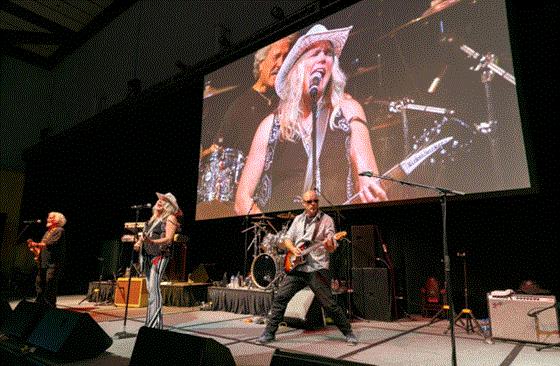
Jeff put Rae onto the task of finding a replacement band. It had to be a big-name act that was available with less than two-day’s notice—no easy task!
Fortunately—and coincidentally——Jefferson Starship was out on tour and happened to be available. They played the same classic tunes, and nobody other than serious rock aficionados were any the wiser that they weren’t hearing the band on the promotional banner. Jeff only revealed the story the next morning at the keynote, and he got a big round of applause for being able to pull off such an amazing last-minute fix.
“Fortunately, they did just an incredible concert … one of the best in all our 13 years,” Jeff told me. “It was a happy ending.”

Three bits of Ball Hort news
Quite a few things happening around Ball HQ in West Chicago these days—three things, actually—worth writing about:
New R&D building. Last week, Anna Ball and her daughter, Susannah, put toes to gold shovel in the groundbreaking for the Ball Helix Central R&D Center. This is the most exciting construction to take place here since the Ball Premier Lab (where they do all the seed testing and coating and pelleting and such).
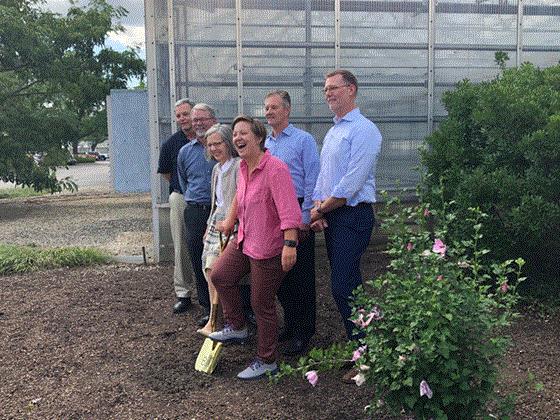
As a division, Ball Helix is the home of the company’s experts in molecular biology, cell biology, analytical chemistry, pathology and intellectual property. They’re currently doing amazing work in small, aging labs and greenhouses. This new Central R&D Center will rival the best in the world, allowing Ball’s scientists to work in-house with the most cutting-edge technologies available, such as genome mapping (which hastened the development of Beacon impatiens).
The Central R&D Center is slated to be completed by March 2021.
Houseplant agreement. Perhaps you’ve already heard this, as the news was out by Customer Day several weeks ago, but Ball Seed has entered into a partnership to distribute ForemostCo’s line of foliage, tropical and succulent plant liners. ForemostCo, a Miami-based, family-owned business, has been around since 1987. The partnership helps Ball meet the growing market demand for houseplants and other trending genetics, and helps ForemostCo reach more customers.
You can download the current ForemostCo catalog at www.ballseed.com/CatalogsBrochures.
Garden mum growth tracker. I mentioned this in my Customer Day video: Ball Seed has created some online resources for garden mum growers, including a graphical-tracking tool. You tell the tool when you want the mums to be ready, and how tall you want them to be, and it provides a space to enter weekly plant growth and lets you know if you’re too short or too tall, and provides some advice for adjusting your growth accordingly.
In addition to the growth tracking tool, a new resource web page at the Ball Seed website gives you an easy way to search for garden mums by color, category, timing and more. There is a quick A-Z reference guide available for download, too.
Access the Garden Mum Growth Tracking Tool at www.ballseed.com/GardenMums.

Vertical Farms from Steve Newman
My friend Dr. Steven Newman from Colorado State seems to have a knack for finding every news item on the planet promoting the latest wacky vertical farming idea. He shares them regularly on Facebook … and I regularly respond with “good grief” or some other expression of disdain for the gullability of the mainstream media when it comes to the planet-saving powers of these so-called “farms of the future.”
Here are two more:
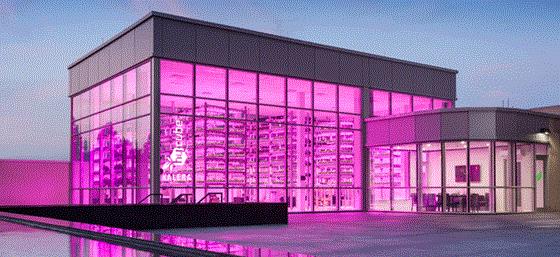
This company, Kalera, which built a vertical farm attached to a Marriott in Orlando (no word on if it’s performing as promised), says they’re going to build the Southeast’s largest vertical farm in Central Florida, capable of producing 5 million heads of lettuce.
I will give Kalera Cofounder and CEO Cristian Toma credit for admitting this:
“There’s been a lot of hype around the industry lately. That’s great, because it’s part of this new revolution in agriculture. But at one point, we do need to show good returns. Capital is impatient. It [will] fly to the next big thing if you don’t show a good return on investment.”
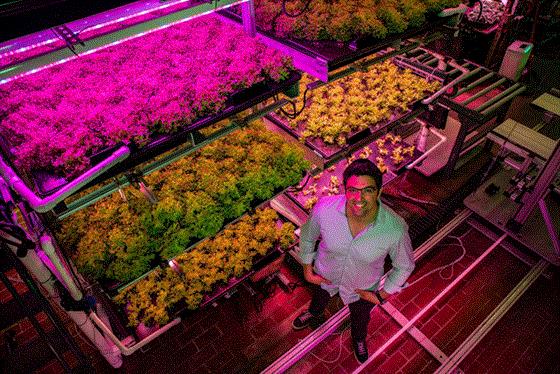
This one is in my backyard, and I give an editor somewhere credit for the headline, “Many have tried and failed to make vertical indoor farming work. This entrepreneur thinks he can do it.”
It’s about Backyard Fresh Farms, a startup by real estate investor Jake Counne (above), who is hoping cameras and artificial intelligence will be his key to success in a field where others have failed. He wants to lease a space, build a 35,000 sq. ft. vertical farm, then harvest 6 million pounds of greens with just six workers. (There’s a line that says he hopes to open 100-sq. ft. facilities around the country … it must mean 100,000 sq. ft., because a 10 by 10 spot is smaller than my home garden.)

Square Roots
Paris to be home of world’s largest rooftop farm
Opening in 2020, this project will be 150,000 sq. ft. of farm—not greenhouse—atop a new exhibition center southwest of the city center.
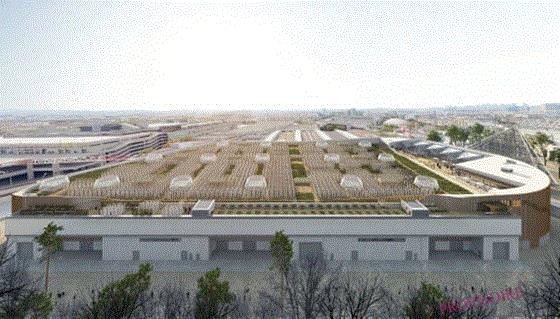
A rooftop farm makes more sense than a warehouse farm, if only because it uses the proven power of the sun and traditional growing techniques. The downsides include weather, logistics (getting supplies up and produce down), the cost of constructing a building that’s sturdy enough to support it, and the cost of operating within a city.
Still, you know I will be in the first row at the ribbon cutting.
Finally, a writer asks the right question
“Are vertical farms ready to grow more than lettuce?”
Good question!
The short answer is no … not anything meaningful to hungry people, anyway. According to Business Insider, the world’s most important food crops are corn, wheat, rice, potatoes, cassava, soybeans, sweet potatoes, sorghum, yams and plantains. That’s what will feed the planet. At best, vertical farms can provide a side salad or some micro greens to sprinkle on top.
National Heirloom Expo
The antithesis of all this modern agriculture might be the National Heirloom Expo. The website describes it as “an annual gathering of gardeners, food activists, farmers, chefs and food organizations from around the globe who come together to share best practices, showcase products and provide tastings.”
It’s coming up September 10-12 at the Sonoma County Event Center in Santa Rosa, California. This will be the 9th annual show, and the theme this year is “The Preservation of Heirloom Foods without Genetic Modification.” They say there will be more than 100 speakers in three halls doing seminars and panel discussions. Proceeds from the event (it’s a not-for-profit) go to local school and educational garden projects.
Look, ma, no watering!
A plant pot that harvests its own water from the atmosphere is an intriguing notion. But once you see the “Dewplanter,” you’ll realize you can probably live without one … dare I say that it’s just plain ugly?
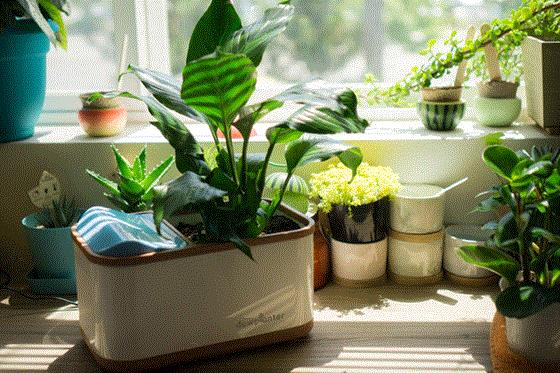
Above is a photo from their website that bothered me: Here you see the Dewplanter, with what appears to be an aspidistra in it. But note that there are at least nine other plants around it that are not in Dewplanters and so are not getting the benefit of free water. Makes no sense! Why not just water the aspidistra with a watering can, same as the other plants? In fact, the Dewplanter is stealing moisture out of the air, possibly causing the other plants to dry out prematurely.
Still, beauty is in the eye of the beholder, and you may think it’s the greatest thing since sliced bread. Just like how I like painted poinsettias.
Finally ...
A couple of sharp-eyed, tank-savvy readers have schooled me on the difference between a propane tank and a well pressure tank. It is the latter that Kevin the Minion was fabricated from, not the former, as I had written last time.
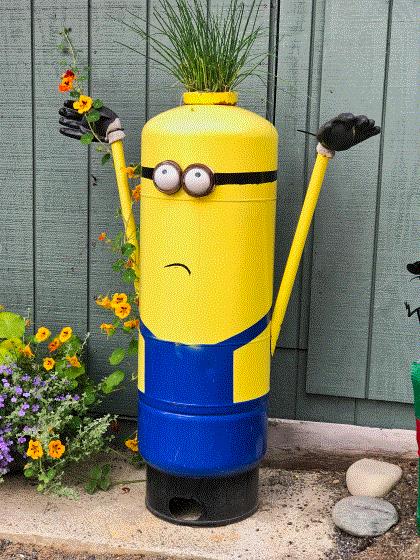
As a man with an extensive workshop who builds furniture, forges metal and still does his own brake jobs, I am ashamed—ashamed, I tell you!—that I made such an obvious mistake. If I can't tell the difference between the two types of tanks, I would never survive a winter in Alaska with the real pioneers.
See you next time,

Chris Beytes
Editor
GrowerTalks and Green Profit
This e-mail received by 23,726 loyal readers!
Thanks to my loyal sponsors, who help me reach the 23,726 readers of Acres Online in 66 countries. Want to be one of them (a sponsor, that is)? Give Paul Black a shout and he'll hook you up.